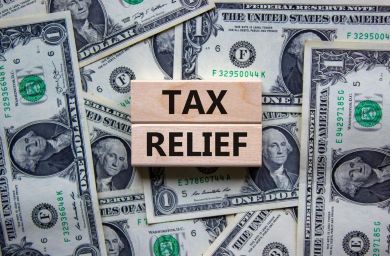Market Based Supply Side Policies Examples and Their Impact
What fuels economic growth and unlocks prosperity for nations? The answer lies in the realm of market based supply side policies. These transformative strategies are designed to boost productivity, foster innovation, and create a fertile ground for businesses to flourish. By addressing the root causes of economic stagnation, these policies pave the way for sustainable development and job creation.
So, let’s explore various market based supply side policies examples and their profound impact on shaping the destiny of economies. From tax cuts to infrastructure development, each step brings us closer to understanding the true drivers of prosperity.
Understanding Market Based Supply Side Policies
Market based supply side policies are a set of economic measures aimed at enhancing the productive capacity of an economy. Unlike demand-side policies that focus on boosting consumer spending, these policies target the supply of goods and services. By fostering entrepreneurship, technological advancement, and job creation, these policies aim to drive sustainable economic growth and create a more prosperous future for nations.
One example is the “Amazon Web Services (AWS) Activate” program, which provides startups with access to Amazon’s cloud computing services at reduced costs. This policy encourages entrepreneurial activity by lowering the barriers to entry for tech startups, enabling them to scale their operations more efficiently and thereby increasing overall economic productivity.
Now, let’s delve into some significant market based supply side policies examples and analyze their impact:
Tax Cuts

Tax cuts are one of the popular supply side policies examples implemented by governments to encourage economic activity and incentivize individuals and businesses. By reducing income taxes, corporate taxes, or capital gains taxes, policymakers aim to leave more money in the hands of consumers and investors, thereby stimulating spending and investments.
Increased Disposable Income: Tax cuts provide consumers with more money to spend, leading to higher consumption and demand for goods and services.
Business Investments: Lower corporate taxes encourage businesses to invest in expansion, research, and development, leading to increased productivity and innovation.
Job Creation: With businesses expanding and investing, job opportunities are likely to grow, reducing unemployment rates.
Deregulation
Deregulation involves reducing government regulations and bureaucratic hurdles that impede business operations. This policy aims to increase market efficiency and foster entrepreneurial activity.
Market Flexibility: Deregulation allows businesses to adapt quickly to changing market conditions, promoting competitiveness and efficiency.
Innovation: With fewer regulatory barriers, businesses can innovate and experiment with new products and services.
Start-Up Growth: Easier entry and exit from markets encourage new entrepreneurs to start businesses, driving economic dynamism.
Education and Skills Training

Investing in education and skills training is a vital supply-side policy to enhance the quality and productivity of the labor force. Governments may subsidize education, provide vocational training, and collaborate with industries to bridge the skills gap.
Higher Human Capital: A skilled workforce contributes to increased productivity, making the economy more competitive.
Technological Advancement: Educated workers are better equipped to adopt and adapt to new technologies, fostering innovation.
Lower Unemployment: A well-trained workforce attracts investment and encourages companies to establish or expand operations, leading to lower unemployment rates.
Infrastructure Development
Among the crucial market based supply side policies examples, infrastructure development enhances a nation’s capacity for economic expansion. Investing in infrastructure, such as roads, bridges, public transportation, and utilities, can significantly improve a country’s productive capacity and facilitate economic growth.
Increased Productivity: Improved infrastructure reduces transportation costs and time, making it easier for businesses to move goods and services efficiently.
Attraction of Investments: Robust infrastructure can attract both domestic and foreign investments, boosting economic activity.
Job Creation: Infrastructure projects create employment opportunities in construction and related sectors.
Trade Liberalization
Trade liberalization involves reducing trade barriers, such as tariffs and quotas, to promote international trade and enhance market access for domestic businesses.
Expanded Market Access: Easier access to foreign markets allows domestic producers to reach a broader customer base, leading to increased exports.
Competitive Pressure: Exposure to international competition encourages domestic industries to become more efficient and innovative.
Consumer Benefits: Lower tariffs can lead to cheaper imports, benefitting consumers with increased choices and reduced prices.
Research and Development (R&D) Incentives

R&D incentives, an integral part of supply side policies examples, fuel innovation and technological advancement in various industries. Governments may provide tax credits or grants to businesses engaging in research and development activities, encouraging innovation and technological advancement.
Technological Advancement: R&D incentives stimulate the creation of new technologies and products, enhancing productivity and economic growth.
Global Competitiveness: Investing in R&D enables businesses to compete globally with cutting-edge products and services.
Job Creation: R&D initiatives require skilled workers, leading to job creation in research and related industries.
Labor Market Reforms
Labor market reforms aim to increase labor market flexibility, including changes to employment contracts, working hours, and regulations.
Reduced Unemployment: Increased flexibility can reduce structural unemployment, as businesses can adapt to demand fluctuations more easily.
Investment Attraction: Flexible labor markets can make a country more attractive to investors due to reduced labor-related risks.
Enhanced Productivity: Labor market reforms may incentivize workers to become more productive, knowing that their efforts are rewarded.
Innovative supply side policies examples illustrate how countries can unleash their economic potential.
Conclusion
Market based supply side policies serve as potent catalysts for economic growth and vitality. By fostering innovation, investment, and human capital development, these policies unlock the true potential of economies. As the world evolves, striking a harmonious balance between supply side and demand side measures remains paramount to securing lasting success. Let us forge ahead with determination, embracing a future of boundless opportunities and shared prosperity.
Let us know your thoughts on supply side policies. Which measures do you believe are most effective in fostering economic growth?


